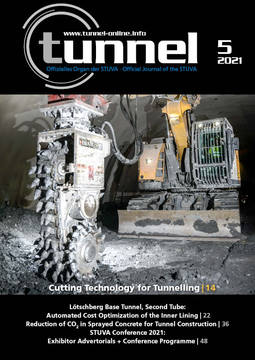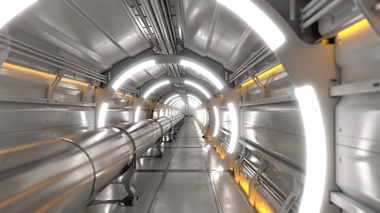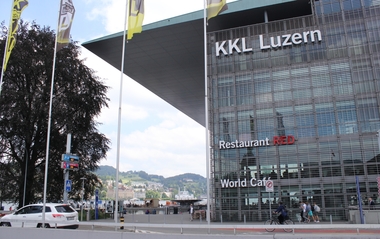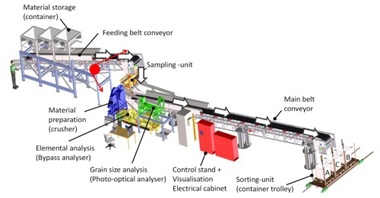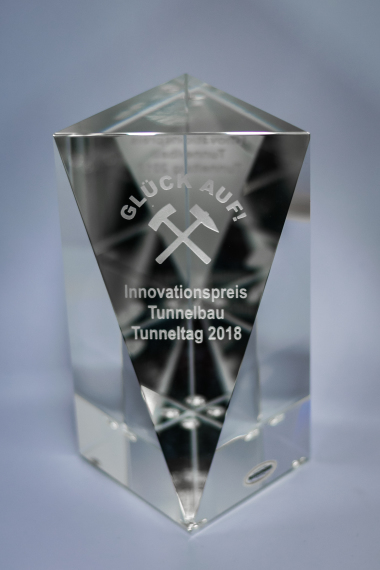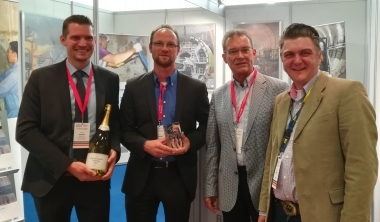FCCIS Mining the Future: International Competition on the Use of Excavated Tunnel Material
The research facilities of the European Organisation for Nuclear Research, CERN, currently extend at the foot of Lake Geneva on Swiss and French territory. With a length of 27 km, CERN operates the largest particle accelerator, the Large Hadron Collider (LHC, Fig. 1).
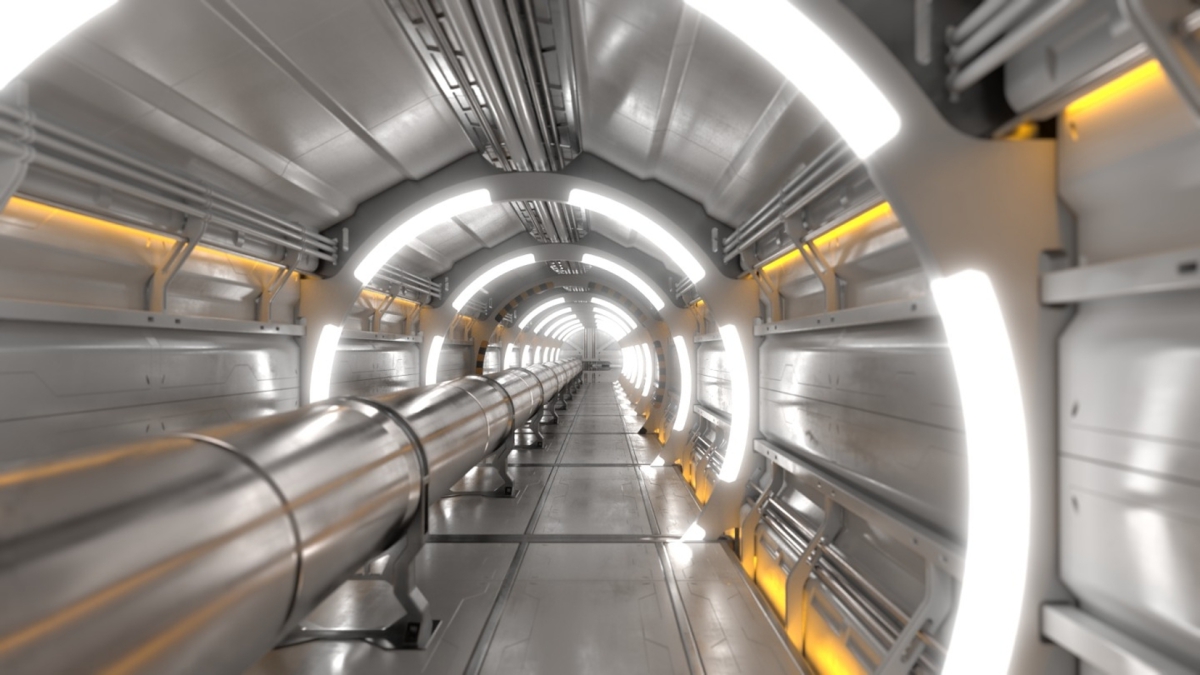 1 | LHC - Large Hardron Collider - typical tunnel cross-section
1 | LHC - Large Hardron Collider - typical tunnel cross-section
Credit/Quelle: FCC study, CERN
For future research activities, CERN intends to build a new 100 km long tunnel, the so-called Future Circular Collider (FCC, Fig. 2). According to current geological forecasts, the FCC will be excavated largely in molasse sediments. During the excavation of the FCC tunnel project, 9 million m3 of excavated tunnel material would be accumulated and deposited, unless a sensible use of this material can be found.
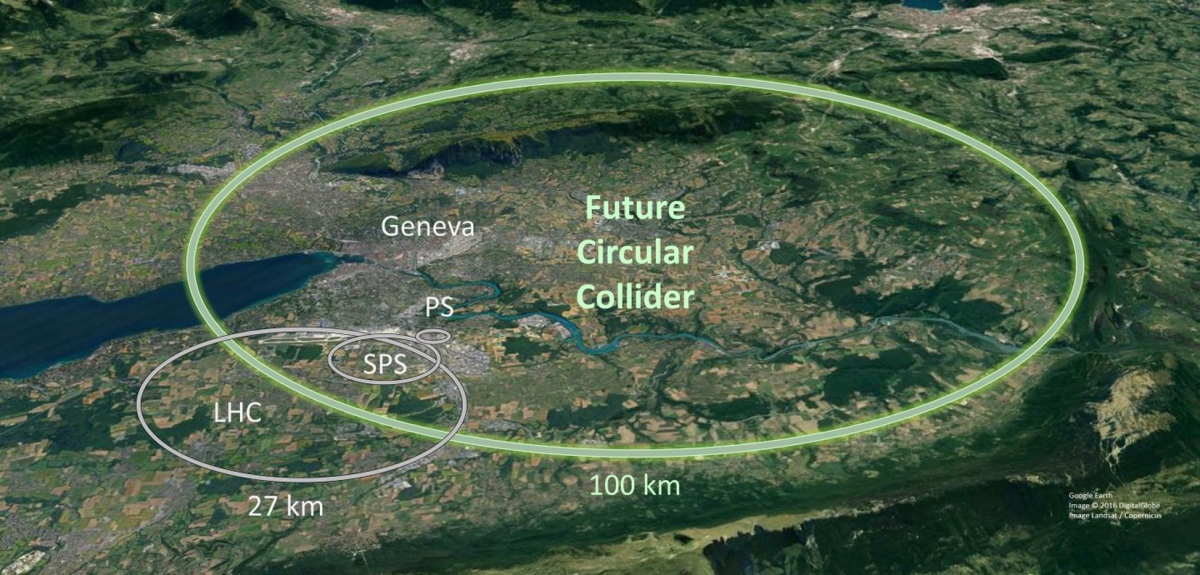 2 | Layout of the Large Hardron Collider and the Future Circular Collider
2 | Layout of the Large Hardron Collider and the Future Circular Collider
Credit/Quelle: FCC study, CERN
FCC Innovation Study – New Solutions for the Re-Use of Excavated Material
Currently, there is no industrial use of molasse sediments. In order to create new ways of using excavated material from tunnelling, CERN has launched the EU project FCCIS (FCC Innovation Study), in which the Chair of Subsurface Engineering – Geotechnics and Tunnelling – of the Austrian Montanuniversität Leoben is a partner. As part of this research project, an international competition is currently being held in CERN‘s „Mining the Future“ task under the direction of Prof. Robert Galler of the University of Leoben, which deals with the responsible use of resources from tunnelling. The competition has the objective of identifying innovations for the use of tunnel excavation materials, in this specific case molasse sediments. The aim is to make future underground construction projects both more resource-efficient and more cost-efficient and to strengthen the European industry in terms of resource conservation and thus environmentally friendly construction.
In the run-up to this, a large number of geotechnical, mineralogical and geochemical laboratory tests with samples from the planned FCC drivage area were carried out at the University of Leoben, the University of Geneva and the ETH Zurich.
On the one hand, the results serve as a basis for tunnel planning, but on the other hand also as a basis for already being able to consider the use of the material today. Currently, excavated material from tunnel construction is treated as waste in EU countries and Switzerland. According to current law, waste must be landfilled if it does not meet end-of-waste criteria. If a trend reversal towards the mandatory use of excavated tunnel material, where technically feasible, in future tunnel construction projects can be achieved and this issue given higher priority, an important step would be made.
Submissions to the Competition Open Until 31 October 2021
The Montanuniversität Leoben has a research centre for tunnel construction and operation, the Zentrum am Berg (ZaB), at the Styrian Erzberg in Austria, where a corresponding technical seminar and the award ceremony of the competition to find the most innovative proposals for tunnel excavation utilisation for the FCC at CERN will take place in autumn 2022.
The business plan for the use of molasse sediments that emerges from the competition will serve as a template for other projects. Due to the disclosure of all data, this should provide a basis for new pilot projects.
The conditions of participation and all documents for the competition are available on the website www.cern.ch/miningthefuture and include, among other things, results and descriptions of the above-mentioned laboratory tests. The deadline for submitting proposals for the use of the excavated tunnel material and for participating in the competition is 31 October 2021. The submitted possible uses will then be evaluated by an international jury, and those submitting the best proposals will be invited to provide further details as part of a second stage of the competition by July 2022. The jury will then select the winner(s). In October 2022, the best proposals will be presented at a special seminar at the ZaB. In addition, there will be an extensive exhibition on the FCC.

